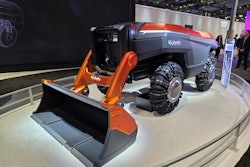 Photo: Device Research Laboratory/MIT
Photo: Device Research Laboratory/MITRecent droughts have reinforced the fact that water is precious, and the researchers at UC Berkeley and MIT have created a device that could alleviate this problem in the driest of areas.
The device is designed to collect water molecules from the air at night and then during the day the water vapor is released and condensed into a reservoir. It is able to do this thanks to a metal organic framework (MOF) that was created by chemist Omar Yaghi. Yaghi collaborated with mechanical engineer Evelyn Wang to build the collection device.
Yaghi developed the first MOF more than 20 years ago, and this particular MOF combines zirconium and adipic acid, which makes it ideal for absorbing water in low-humidity conditions.
Harvesting moisture from the air isn’t new as fog harvesting and dewing have been used for many years. While fog harvesting is great for more humid areas and dewing can also pull water vapor out of the air, it does require a lot of energy to do so, meaning this new prototype fits a niche where it functions in low humidity areas and does not require electricity.
By using the sun’s heat during the day, it is able to warm the MOF causing it to release the water molecules into the reservoir below.
“That’s really where the power of this chemistry comes into play,” Yaghi told The Washington Post. “Where the composition of organic and inorganic and the balance between these two allows you to craft the interior so that it loves water, but it doesn’t hold onto it too tightly.”
According to the abstract published in Science, it is capable of harvesting 2.8 liters per kilogram of the zirconium-acid material.
A scientist who was not involved with the work, Mercouri Kanatzidis, a chemist at Northwestern University, explained that harvesting water from desert air has been a longstanding dream and told Science that the project “is a significant proof of concept.”
The main obstacle that is keeping moisture farms like in Star Wars from becoming a wide spread reality is the costly nature of zirconium, but the researchers are looking into using aluminum instead.
In order to collect around 30 liters, the device would need multiple layers of MOF and would be around the size of a suitcase instead of a tissue box like it is now.
If this technology is pursued, it could help with water access to those in arid regions both in the U.S. and abroad.










